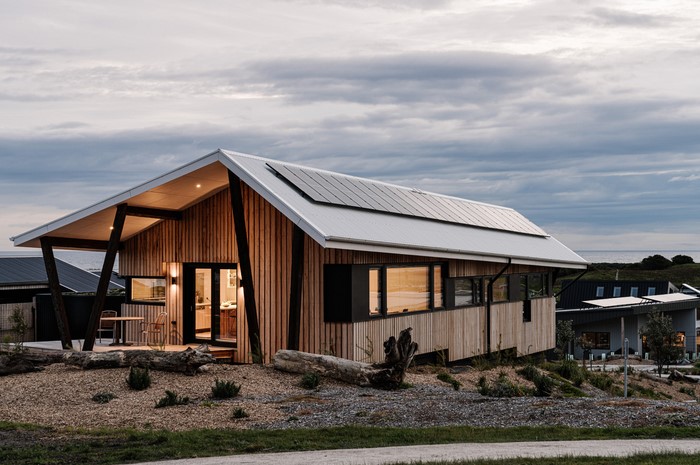Sustainable Home Additions: Eco-Friendly Upgrades for Your Home

Source:https://watara.com.au
As the world continues to shift toward environmental sustainability, homeowners are increasingly looking for ways to incorporate eco-friendly practices into their living spaces. One of the most impactful methods to achieve this goal is through sustainable home additions. These upgrades not only reduce a home’s carbon footprint but also enhance its energy efficiency, comfort, and overall value. Whether you’re looking to make small changes or embarking on a larger renovation project, sustainable home additions are a powerful tool to make your home more environmentally responsible while enjoying long-term savings and improvements.
The Importance of Sustainable Home Additions
Sustainable home additions go beyond just aesthetic enhancements. They focus on reducing resource consumption, minimizing environmental impact, and improving energy efficiency. With rising energy costs and growing concerns about climate change, many homeowners are realizing the importance of making their homes more sustainable. By adding features that harness renewable energy, increase insulation, and utilize sustainable materials, you not only help the environment but also lower your household’s long-term operating costs.
Investing in sustainable home additions can also contribute to your community’s environmental health, as energy-efficient homes help reduce the strain on local power grids and the need for additional natural resource extraction. As the demand for green buildings continues to grow, making these improvements could increase your property’s market value, appealing to eco-conscious buyers.
Popular Sustainable Home Additions
1. Solar Panels
One of the most common and effective sustainable home additions is installing solar panels. Solar power systems capture sunlight and convert it into electricity, providing a renewable energy source that can significantly lower your monthly electricity bills. In many regions, government incentives and tax credits are available for homeowners who install solar panels, making it an even more cost-effective option.
In addition to reducing your carbon footprint, solar panels can increase your home’s energy independence. By producing your own electricity, you rely less on external power providers, which helps you avoid price hikes and power outages. Solar energy systems are durable and require minimal maintenance, making them a smart long-term investment for sustainability.
2. Green Roofs and Walls
Another innovative and eco-friendly addition is the installation of green roofs or walls. These living systems, which incorporate plants and vegetation, provide numerous environmental benefits. A green roof can reduce the urban heat island effect, improve air quality, and absorb rainwater, helping to mitigate stormwater runoff. Green walls, typically found on the exterior or interior of a building, can also offer improved insulation, reduce energy consumption, and create a natural aesthetic that enhances the quality of your living space.
Both green roofs and walls contribute to increased biodiversity by providing habitats for birds, insects, and other small wildlife. By creating a more sustainable and natural environment, these additions help integrate your home into the broader ecosystem while improving its thermal performance.
3. Energy-Efficient Windows and Insulation
Replacing old windows with energy-efficient ones is another sustainable home addition that can have a profound impact on your home’s energy use. Modern, double-glazed windows are designed to prevent heat loss in winter and keep your home cool during the summer months. By reducing the need for heating and cooling, energy-efficient windows decrease your energy consumption, making your home more comfortable while saving you money.
Alongside windows, upgrading your home’s insulation is also crucial for enhancing energy efficiency. Proper insulation keeps the indoor temperature stable, reducing the workload of your heating and cooling systems. Eco-friendly insulation materials, such as cellulose, recycled cotton, or wool, can further minimize your environmental footprint. Combining both energy-efficient windows and high-quality insulation provides a comprehensive approach to creating a more sustainable home.
Building with Sustainable Materials
When it comes to sustainable home additions, the choice of materials is just as important as the upgrades themselves. Building with eco-friendly materials reduces the environmental impact of construction and renovation projects. Many green building materials are renewable, recyclable, or locally sourced, which lowers carbon emissions associated with transportation.
Bamboo, for example, is a fast-growing and highly renewable resource used in flooring and cabinetry. Cork, another sustainable option, is harvested from the bark of cork oak trees without harming the tree itself, making it an excellent choice for flooring, wall panels, and insulation. Reclaimed wood, which repurposes timber from old buildings or discarded furniture, can also create beautiful, eco-conscious home additions with a unique character.
Incorporating recycled materials into your construction, such as reclaimed bricks or glass, further reduces waste and the need for new raw materials. Choosing sustainable materials not only improves the environmental performance of your home but also contributes to a healthier indoor air quality by reducing the use of toxic chemicals often found in conventional building materials.
Sustainable home additions offer a unique opportunity to enhance the environmental responsibility of your living space while reaping long-term benefits such as lower energy bills, improved comfort, and increased property value. Whether it’s through the installation of solar panels, the addition of green roofs, or upgrading to energy-efficient windows and insulation, there are numerous ways to make your home more eco-friendly. By incorporating sustainable home additions, you contribute to a greener future while creating a healthier, more comfortable living environment. As we continue to prioritize sustainability, these upgrades are sure to become an essential aspect of modern home design and construction.